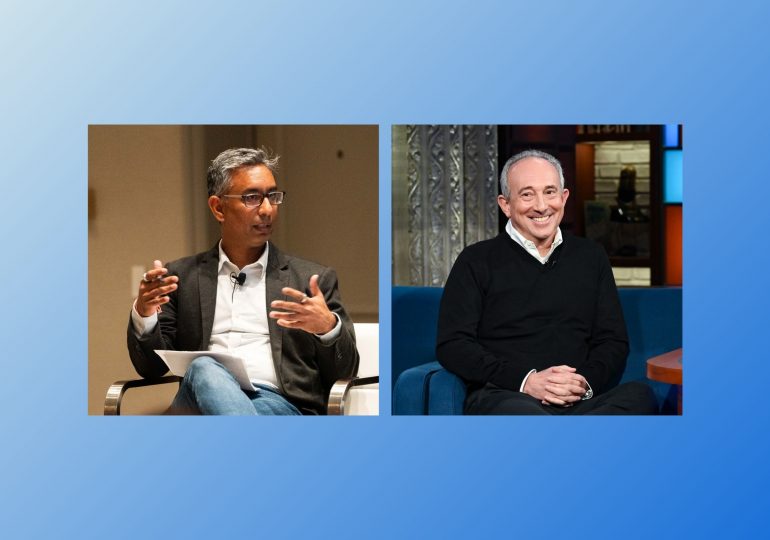From smartwatches to fitness trackers, wearable technologies have the opportunity to transform how patients understand their health—long after they leave their doctor’s office. But adoption of the technology, for both patients and healthcare professionals, has been slow going.
Shyamal Patel and Dr. David Agus gathered at the TIME100 Health Leadership Forum in New York City on Oct. 22 to discuss the state of emerging technologies in healthcare and the impact they stand to have in a panel moderated by TIME senior health correspondent Alice Park.
[time-brightcove not-tgx=”true”]
Wearable technology could help patients monitor their sleep patterns, blood pressure, or menstrual cycle, but it’s yet to be widely adopted by the healthcare sector, says Agus, founding director and co-CEO of the Ellison Institute of Technology. “It still has not been normalized.”
In part, it’s because many healthcare providers are not yet trained in how to analyze the data. “We just haven’t built the muscle on the healthcare side to truly think about how we ingest this data and make sense of it,” says Patel, senior vice president and head of science at ŌURA, a sponsor of the TIME100 Health Leadership Forum. “If you had continuous health blood pressure data, how do you know, what do you do with it? Our practice of healthcare is built around one blood pressure measurement in your clinic.”
There also isn’t enough communication between the healthcare technology industry and healthcare providers, says Patel. “In the U.S., you have this fairly complex ecosystem of payers, providers, [and] patients. Now you can add health technology companies to that mix,” he says. “The interests of all of these players are not necessarily always aligned. So I think there is a real need for strong partnerships between these stakeholders to focus on driving better health outcomes.”
Agus points to several obstacles standing in the way of widespread adoption of wearable tech. The price point of consumer-focused wearable technology can often be inaccessible, and many products don’t have a CMS billing code for insurance reimbursement. Many healthcare professionals also still want to see studies that prove that the data from wearable tech is accurate and can encourage a change in a patient’s behavior.
“Interventions that can affect outcome are what we need, and we need companies to put the capital up front and do the studies to show they can affect outcome,” says Agus. “And once we do that, those are the technologies that we should all push and enable our patients to use, and they have to be accessible.”
It’s been a little over a decade since consumer-focused wearable technologies like fitness trackers and smart rings first became mainstream, but the industry has plenty of room to grow. “One aspect is this evolution of the technology and what we can do with it and how many aspects of our health we can understand better because we have access to this personal health technology,” says Patel. “And the second aspect is, how do we make sense of it and bring it into the practice of health care?”
The TIME100 Health Leadership Forum was presented by Merck, Deloitte, ŌURA, and PhRMA.
Leave a comment



